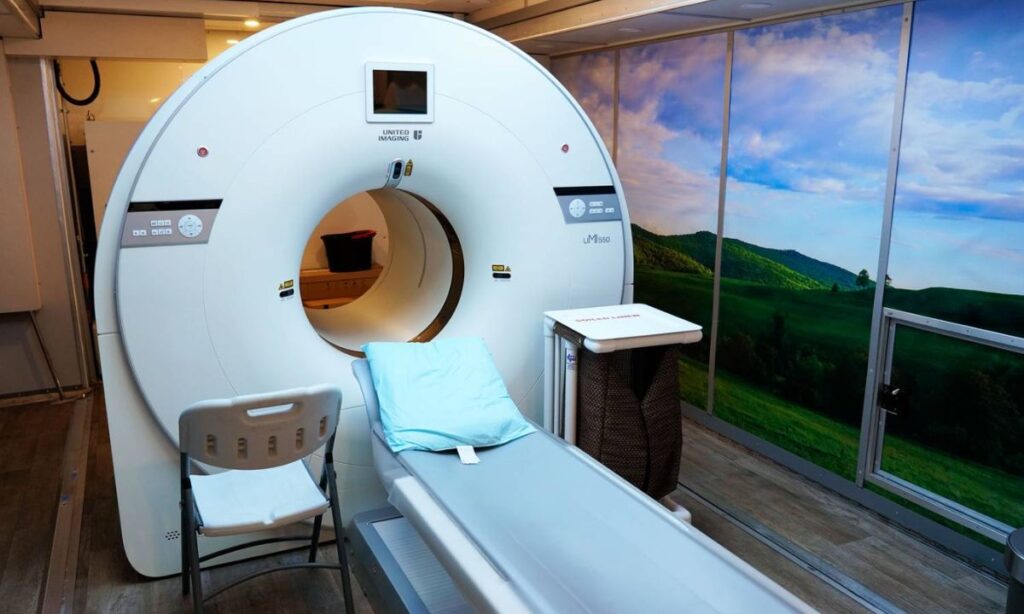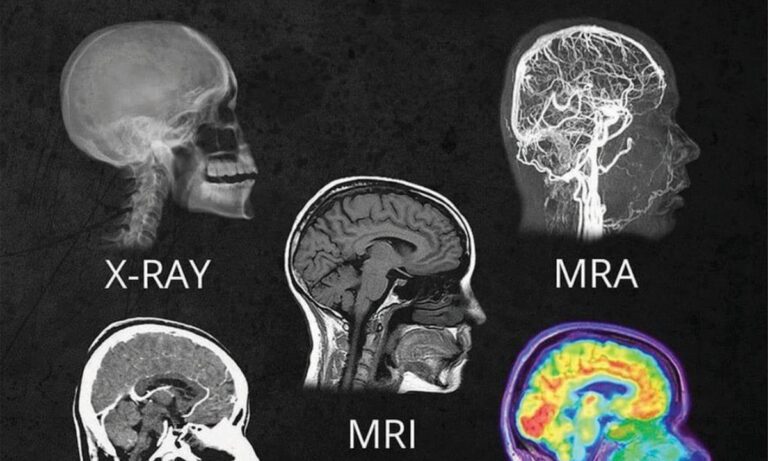A CT scan uses X-rays to create detailed images of the body’s internal structures, such as bones and organs. It is useful for detecting injuries, tumors, and infections. A PET scan uses a small amount of radioactive material to observe the body’s metabolic.
Activity. It helps doctors detect cancer, brain disorders, and heart diseases by showing how tissues and organs are functioning, rather than just their structure. Both scans play vital roles in diagnosing health conditions.
What is a CT Scan and How Does It Work?
A CT scan (computed tomography scan) is a medical imaging procedure that combines X-rays and computer technology to create detailed cross-sectional images of the body. It provides clear images of bones, organs, and tissues.
Unlike a standard X-ray, a CT scan captures multiple images from different angles and then uses a computer to stitch them together, creating a more detailed image. During the procedure, the patient lies on a table that moves through the CT scanner.
What Does a CT Scan Show?
A CT scan shows detailed images of the inside of the body, providing information about the bones, organs, and soft tissues. It helps detect:
- Cancerous tumors or abnormal growths
- Internal injuries after accidents
- Blood clots, infections, or abscesses
- Bone fractures
- Lung diseases (e.g., pneumonia, emphysema)
- It is also commonly used to guide medical procedures like biopsy, surgery, or radiation therapy.
Read This Blog; My Dog Yawns a lot When i Pet Him
What Should You Expect During a CT Scan?
During a CT scan, you will lie on a narrow table that slides through the CT scanner. It’s important to remain still to get clear images. The procedure is quick, usually taking about 10 to 30 minutes, depending on the area being scanned.
While the scan itself is painless, you might feel some warmth or a slight sensation when the contrast is injected. You’ll hear a series of clicking sounds during the scan as the machine takes the X-ray images.
What is a PET Scan and How Does It Work?

A PET scan (positron emission tomography) is a type of imaging test that uses a small amount of radioactive material to examine the function of organs and tissues. Unlike a CT scan.
Which focuses on structural details, a PET scan detects metabolic changes or abnormalities in the body’s biochemical processes. During the PET scan, a radioactive tracer is injected into the bloodstream. This tracer emits positrons.
What Does a PET Scan Show?
PET scans are used to observe cellular activity and metabolic processes. They are highly effective in detecting diseases at a very early stage when they might not yet show up on other imaging tests. PET scans show:
- Cancer detection: PET scans can identify cancerous cells, even before they form a tumor.
- Brain function: PET scans help assess brain diseases like Alzheimer’s, seizure disorders, and mental illnesses.
- Heart health: They can detect coronary artery disease, heart attacks, or areas of the heart that are poorly perfused.
- In combination with CT scans, PET scans can also be used to provide more accurate and comprehensive images, combining both functional and structural information.
Read This Blog; Reasons Why Everyone Should Have a Pet
What Should You Expect During a PET Scan?
The process of a PET scan begins with the injection of a radioactive tracer into a vein. It typically takes 30 to 60 minutes for the tracer to spread throughout the body and be absorbed by organs and tissues.
The scan itself is painless, although you may be asked to lie still for 20-40 minutes, depending on the areas being imaged. Unlike CT scans, PET scans require a period of waiting for the radioactive material to work its way into the body, which can add some time to the process.
A PET scan is typically an outpatient procedure.

A PET scan is typically an outpatient procedure, meaning you can go home the same day. It usually takes about 30 to 90 minutes, depending on the area being scanned.
You won’t need to stay overnight, and you can resume normal activities once it’s done, though your doctor may give specific instructions based on the results. The procedure is generally safe, with minimal risks involved due to the low level of radiation used.
Comparison of CT Scan and PET Scan
| Aspect | CT Scan | PET Scan |
| Purpose | Detects structural changes in tissues and bones | Detects metabolic activity and biochemical changes |
| How it works | Uses X-rays to create detailed body images | Uses radioactive tracers to observe function |
| What it shows | Tumors, fractures, internal bleeding, infections | Cancer, brain function, heart health, infections |
| Procedure Time | 10-30 minutes | 30-90 minutes |
| Contrast Material | Sometimes injected (iodine-based) | Requires injection of a radioactive tracer |
| Safety Concerns | Involves exposure to X-ray radiation | Involves exposure to low levels of radiation |
Frequently Asked Questions
Is a CT scan more detailed than an X-ray?
Yes, a CT scan provides more detailed images because it captures multiple cross-sectional views and combines them into a 3D image.
How long does a PET scan take?
A PET scan usually takes between 30 to 90 minutes, including the time to wait for the tracer to move through your body.
Do CT scans use radiation?
Yes, CT scans use X-rays, which involve a small amount of radiation.
Are PET scans safe?
Yes, PET scans are considered safe. The amount of radiation is very low, and it is generally not harmful.
What are the risks of a PET scan?
The main risk is exposure to a small amount of radiation, but it’s generally considered low-risk. Pregnant women or those who might be pregnant should avoid this test.
How long does it take for a PET scan to show results?
It typically takes 1-2 days for the radiologist to analyze the images and provide a report to the doctor.
Conclusion
In summary, both CT scans and PET scans are valuable tools in medical imaging, but they serve different purposes. CT scans are excellent for showing detailed structural images of the body, making them ideal for detecting fractures, tumors, and internal injuries.
On the other hand, PET scans are particularly effective for evaluating functional processes and detecting metabolic changes, making them invaluable for cancer detection, assessing brain disorders, and heart health.
